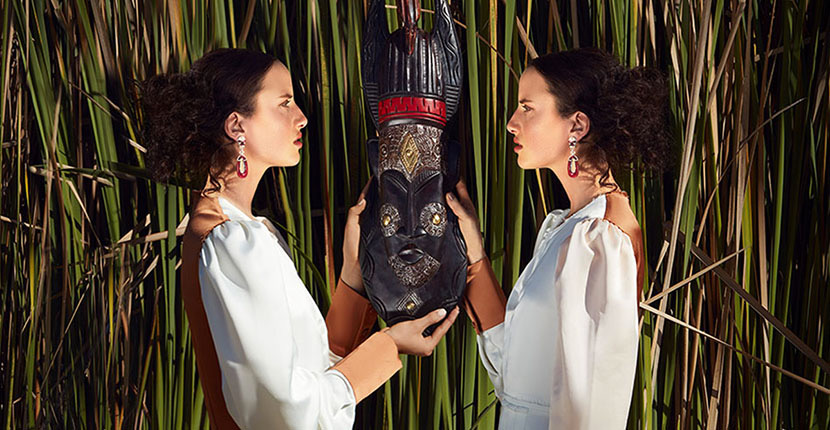
A model wearing Satta Matturi's Nomoli Totem Earrings. Photo courtesy
Jewelry News
Satta Matturi’s Jewels Are Inspired By Africa
Find out about the designer and her collection that is beloved by Rihanna
Lots of designers are passionate and knowledgeable about gems. Many have graduate gemology degrees. But I have never met a designer with quite the same deep understanding of stones as Satta Matturi.
The British-West African talent who launched her collection in 2015, began working for DeBeers in London right after she graduated from college and stayed there for 17-years. She started off grading the smallest rough gems, known as melee that weigh around 1/5 of a carat, and worked her way up to reviewing large gems over 10-carats, known at DeBeers as Exceptionals. Then she went out in the field around the world for her diamond sightholder clients to bid on tenders.
As a rough diamond expert, Satta was following in her father’s footsteps. He was the Director of the DeBeers operation in Sierra Leone during the 1970s and 80s long before the country broke out in civil war in the nineties. “We used to have a sorting office in our house,” remembers Satta. “I’d come home to buyers, sorters and valuers all working under the sorting lamps. It was fascinating.”
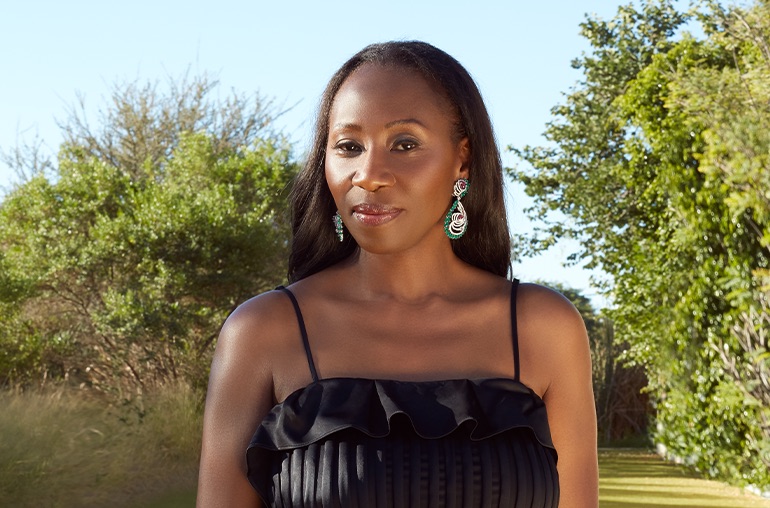
Designer Satta Matturi wearing her Bird of Paradise earrings. Photo courtesy
Being a rough diamond expert means Satta’s knowledge goes way above and beyond knowing the 4Cs of grading a stone. “I have to make a decision on what a rough diamond’s polished outcome is going to be,” she explains. “I can usually tell where a tender comes from—the DRC [the Democratic Republic of Congo], Russia, Namibia or West African alluvial diamonds—just by looking it.”
Satta decided to add to her experience and launch her own collection of jewelry after making pieces for friends and family. She also wanted to expand representation on the design side of the business. “I thought I have a passion for this and I am creative in what I produce,” Satta explained. “Plus, there is a gap for people of color in the fine jewelry space and I wanted to help change that.”
Read on to find out more about Satta Maturi in the interview below. I reached the designer over the phone in Botswana where she lives with her family part time. They also reside in London.
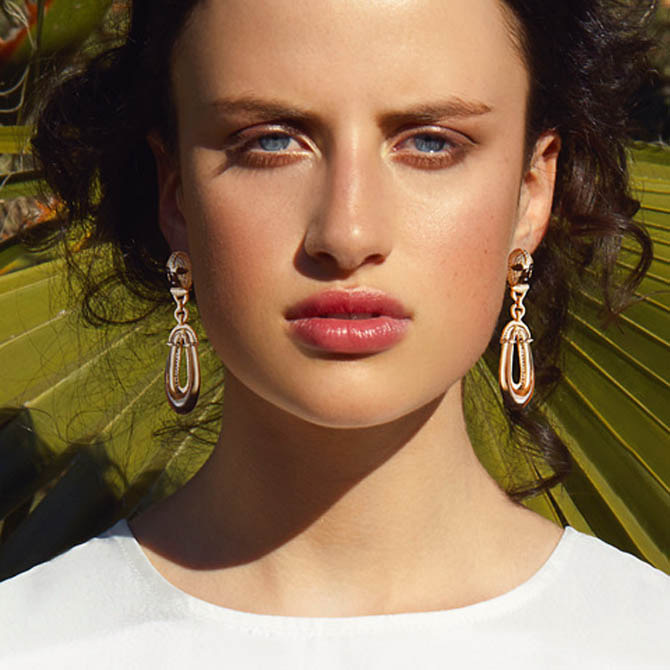
A model wearing Satta Matturi’s Nomoli Totem Earrings. Photo courtesy
Tell me about when you started designing jewelry and your first collection.
When I designed the Debut Collection it was a mixture of everything I loved from design motifs to various gems, rose quartz, lots of diamonds. Each piece has its own story to tell in its own unique way. There is a butterfly ring, pearl tassel earrings, a diamond hand piece and lots of other things.
It remains our hero collection and will always be available for special order, but the next collection I focused thematically. It actually came about after I met with the French jewelry critic Olivier Dupont in a lovely hotel in London. He said for your next collection ‘Stop and think about it.’ And that’s how Artful Indulgence started.

Nomoli Totem earrings and a necklace by Satta Matturi Photo courtesy
For Artful Indulgence you brought iconic African design motifs, flora and fauna into the collection. It’s stunning. I feel like the most signature item is the Nomoli Totem earrings.
They are inspired by traditional West African wooden masks and have been one of our best sellers. People who collect African art like them. For the production we had to find a colored stone supplier who could do the cutting which is intricate.
One reason they have become so well-known is because Rihanna has them. I sent them to her stylist for a Fenty event then she bought two pairs of mask earrings. She has worn her Nomoli Totem Asymmetric earrings with diamonds, black onyx and South Sea Pearls on Instagram.
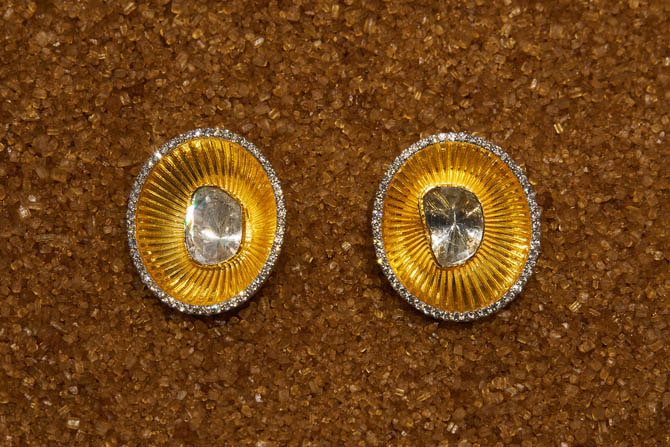
Calabash Teacup earrings by Satta Matturi Photo courtesy
I love your brushed gold Calabash Teacup earrings set with diamond slices. What is the symbolism of the motif?
Calabash bowls are symbolic of many things. They are one of Central and West Africa’s most artistic handicrafts. The bowls are made from large gourds which grow similarly to pumpkins. They are used as a tool after it is scoop out and dried out in the sun. It is used to carry cow’s milk and also as part of a Kora musical instrument which is synonymous with marriage. When they bring in the dowry, it is brought in a calabash bowl which symbolizes purity and prosperity. It is also synonymous with coronation of kings.
I thought why don’t we make it into earrings? We used 18K gold. I wanted it to look vibrant so it is rhodium plated to look like the sun. In the center I thought something simple. Two slices of rough diamonds which were lasered. They are around 2-carats each.
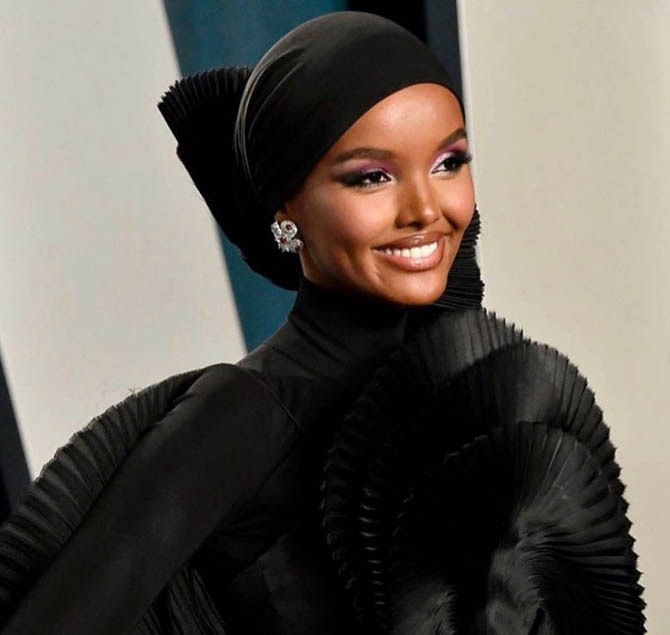
Halima wearing Satta Matturi earrings at the 2020 Vanity Fair Oscar Party. Photo via
Another one of your great celebrity moments was when the model Halima Aden wore your Zen rubellite earrings to the 2020 Vanity Fair Oscar party. What inspired those stunning jewels?
The inspiration was the the java shield and batik fabrics in Central and Western Africa. It was modeled around pattern and the way the fabric looks. The jewels are composed of cabochon rubellites and rose-cut diamonds which give some texture and dimension.
If people want to buy a piece from your the collection, what is the best way to find it and what do you have planned for the future?
People can come to us directly to make an order. We also sell at trunk show events and in art galleries. I am going to introduce e-commerce in the future. I am also going to do a little a pret – ready-to-wear collection and make more accessible pieces.
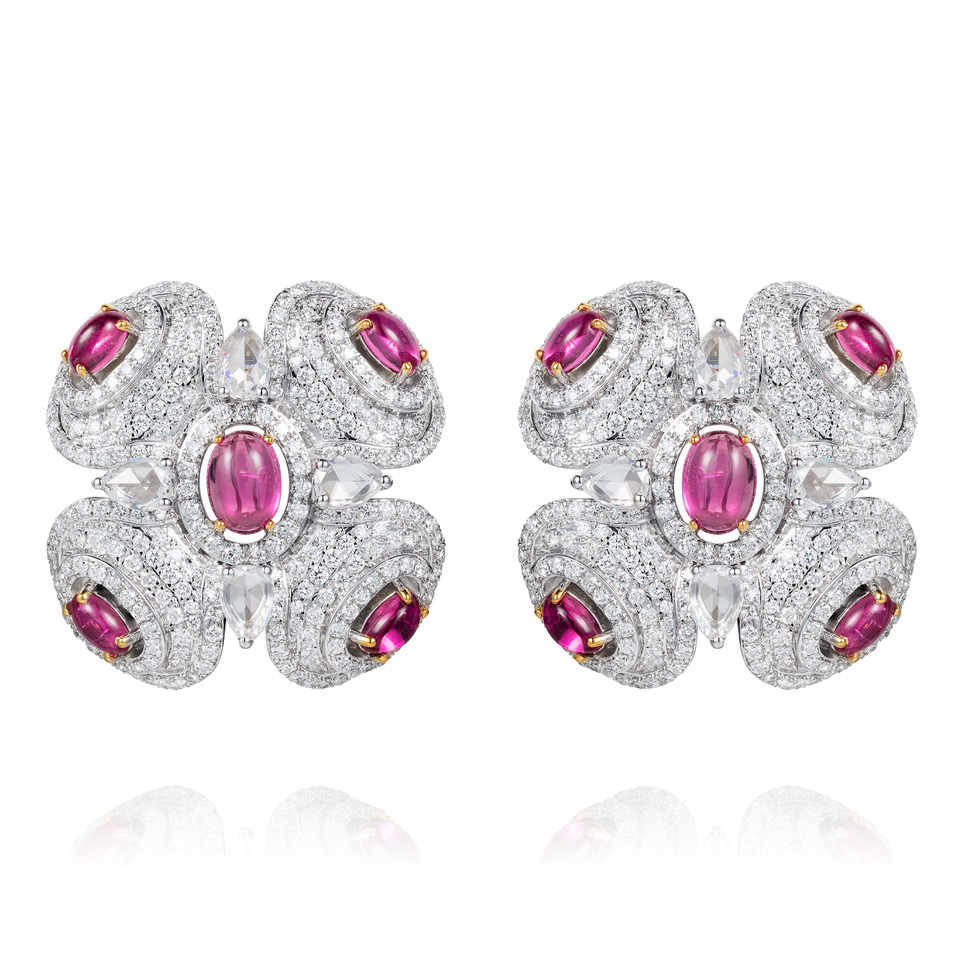
Zen in Rubellite Earrings by Satta Matturi. Photo courtesy
You are such a diamond expert and still work in the field consulting big brands on buying, I would love to ask you about lab grown diamonds. Could you share your thoughts on the subject?
My take on it is I don’t believe in the lab grown. When you talk about the social impact of the environment, I still believe that Africa needs the raw commodity. In Botswana, of course, diamonds are a significant part of the gross national product, but there are smaller places that benefit from diamonds as well.
I have done lots of mine visits to alluvial mining where it was a father and son digging the diamonds. If that was taken away the amount of people who would suffer would be immeasurable, because when that guy gets money he is feeding 20 other people.
There is a caveat to that statement. It can be a dark dirty world. It must be monitored and checked. Some governments need to get the right leaders and learning from other producers’ countries on what they have done and make it much better for the communities. But what would these communities do without diamonds? Lab grown diamonds could kill their livelihoods.
Related Stories:
Get to Know Shelly Branch of Particulieres
Diamonds Are Being Called Natural Diamonds Now
Art Smith Memorial Scholarship Fund
Get a gem in your mailbox SIGN UP FOR THE ADVENTURINE NEWSLETTER




